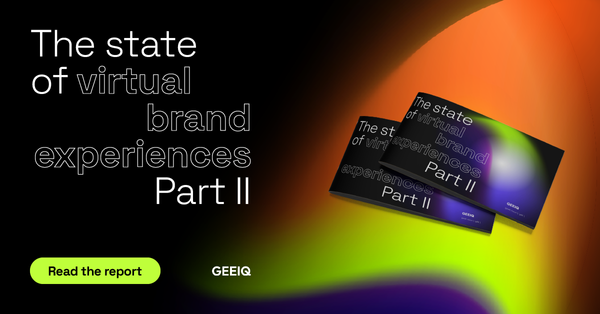Business Insider’s recent obituary for the metaverse misses the point, falling into the trap of conflating the broader idea of the ‘metaverse’ with Mark Zuckerberg’s more narrow interpretation.
And that’s understandable, because rightly or wrongly, ‘Meta’ has become a mainstream voice of authority for people not totally familiar with the concept.
But the metaverse is so much more than that, and contrary to what some commentators are arguing, it’s thriving.
The hype is dead, but the metaverse isn’t
For brands, the metaverse has provided an opportunity to attract the kind of press coverage that most traditional marketing campaigns simply never could.
And while the journalist notes that, ‘the hype could not save the metaverse’, we at GEEIQ would argue that the metaverse does not, in fact, require ‘saving’. The hype around it is absolutely dead, and that’s a good thing.
From a brand perspective, we’ve moved past the point where positive headlines can be considered a sufficient result for investing what is sometimes millions of dollars in a virtual activation.
At GEEIQ, we’re all about the data. We encourage our subscribers to see the metaverse not as a fad at which to throw some cash, but as a brand new marketing and communications channel that should be measured as such – against robust, long-term strategies that prioritise data over puff pieces.
Defining the metaverse
We best understand the metaverse as a network of 3D virtual environments that humans can inhabit and socialise within. Eventually, these worlds will become interconnected and interoperable.
And based on this definition, the metaverse’s future seems to be secure.
As Epic Games CEO Tim Sweeney states, there are 600,000,000 monthly active users – that’s nearly double the population of the US – across a handful of popular platforms, none of which seem to be dying any time soon.
These are platforms that have been around for some time, and they are the most comparable spaces to our understanding of what the metaverse is today.
These audiences continue to grow, and the idea that they will eventually become ‘interconnected and interoperable’ is not unreasonable.
The metaverse is not Meta, and it’s certainly not dead. It existed long-before Facebook’s re-brand and will continue to create tangible use-cases as it grows.
GEEIQ’s mission is to help brands of every shape and size to view the metaverse as a vertical in which to engage with communities in new, immersive and personalised ways, and when looking at the data rather than the headlines, this strategy seems to be working…
